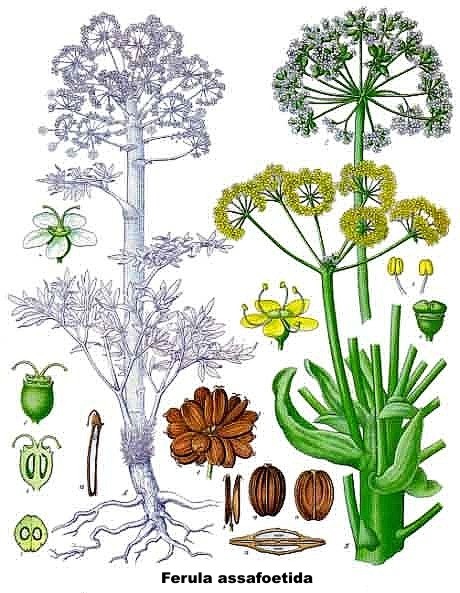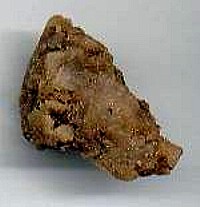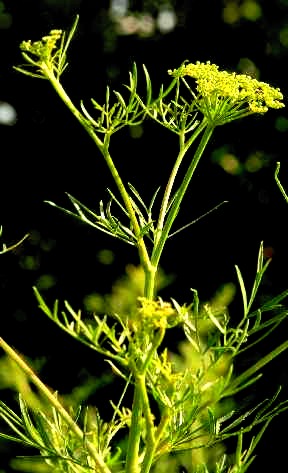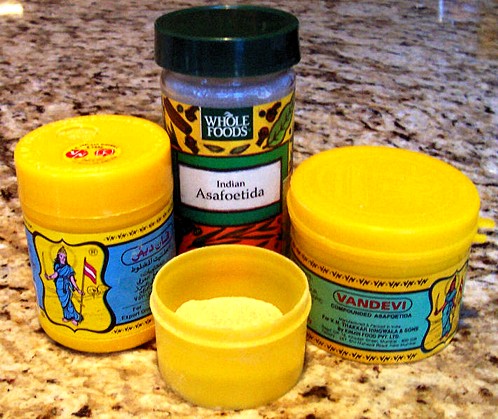Lessico
Assafetida
Ferula assafoetida

Dal latino medievale as(s)a di probabile origine persiana = resina + il latino classico foetidus, puzzolente. Erbacea perenne - Ferula assafoetida - della famiglia Ombrellifere (Apiacee) originaria del Medio Oriente. Ha fusto liscio, glauco, robusto, foglie pennato-composte; fiori piccoli, gialli, riuniti in infiorescenze a ombrella composte da numerosi raggi; i fiori laterali sono più grandi di quelli interni.
Dalla radice si ricava una
gommoresina di odore forte e sgradevole che comunque viene usata in Oriente
come condimento. Contiene terpeni, gomme e composti solforati. Raramente usata
in farmacia, ha un'azione carminativa e antispastica. Vedi anche silfio![]() .
.

Resina di Ferula assafoetida

Asafoetida (Ferula assafoetida), alternative spelling asafetida, also known as devil's dung, stinking gum, asant, food of the gods, hing, Hilteet, and giant fennel, is a species of Ferula native to Iran. It is an herbaceous perennial plant growing to 2 m tall, with stout, hollow, somewhat succulent stems 5-8 cm diameter at the base of the plant. The leaves are 30–40 cm long, tripinnate or even more finely divided, with a stout basal sheath clasping the stem. The flowers are yellow, produced in large compound umbels. Asafoetida has a foul smell when raw, but in cooked dishes, it delivers a smooth flavor, reminiscent of leeks.
Cooking

Jars of commercially available asafetida powder
This spice is used as a digestive aid, in food as a condiment and in pickles. Its odor is so strong that it must be stored in airtight containers; otherwise the aroma, which is nauseating in quantities, will contaminate other spices stored nearby. However, its odour and flavor become much milder and more pleasant upon heating in oil or ghee, acquiring a taste and aroma reminiscent of sautéed onion and garlic. In India, it is used especially by the merchant caste of the Hindus and by adherents of Jainism, who do not eat onions or garlic. It is used in most vegetarian and lentil dishes to both add flavor and aroma and reduce flatulence. It is mainly grown in Iran, Afghanistan. The Indian companies Laljee Godhoo, Laxmi Hing (R M Kanani & Co - Gujarat) are the world's largest producers of compounded asafoetida.
Impact on health & medical applications
Asafetida has certain medicinal uses and most commonly is used as a digestive aid. It is reputed to lessen flatulence and is often added to lentil or eggplant dishes in small quantities. It is also said to be helpful in cases of asthma and bronchitis. A folk tradition remedy for children's colds: it is mixed into a foul-smelling paste and hung in a bag around the afflicted child's neck. In Thailand it is used to aid babies' digestion and is smeared on the child's stomach in an alcohol tincture known as "mahahing." John C Duval reported in 1936 that the odor of asafetida is attractive to the wolf, a matter of common knowledge, he says, along the Texas/Mexican border.
Asafetida has also been reported to have contraceptive/abortifacient activity, and is related (and considered an inferior substitute to) the ancient Ferula species Silphium. Asafoetida oleo-gum-resin has been reported to be antiepileptic in classical Unani as well as ethnobotanical literature.
It is also used as one of several possible scent baits, most notably for catfish and pike. In Jamaica, asafetida is traditionally applied to a baby's anterior fontanel (Jamaican patois "mole") in order to prevent spirits (Jamaican patois "duppies") from entering the baby through the fontanel.
History
It was familiar in the early Mediterranean, having come by land across Iran, and was popular in any self-respecting Classical kitchen. Though it is generally forgotten now in Europe, it is still widely used in India (commonly known there as hing). It emerged into Europe from a conquering expedition of Alexander the Great, who after returning from a trip to north-eastern Persia (modern Afghanistan), thought they had found a plant almost identical to the famed silphium of Cyrene in north Africa -- though less tasty. Dioscorides, in the first century, wrote that, "the Cyrenaic kind, even if one just tastes it, at once arouses a humour throughout the body and has a very healthy aroma, so that it is not noticed on the breath, or only a little; but the Median [Iranian] is weaker in power and has a nastier smell." Nevertheless, it could be substituted for silphium in cooking, which was fortunate, because a few decades after Dioscorides time, the true silphium of Cyrene went extinct, and Asafoetida gained in popularity, by physicians as well as cooks.
After the Roman Empire fell, until the 16th century, asafoetida was rare in Europe, and if ever encountered, is was viewed as a medicine. "If used in cookery, it would ruin every dish because of its dreadful smell," asserted García de Orta's European guest. Nonsense, García replies, "nothing is more widely used in every part of India, both in medicine and in cookery. All the Hindus who can afford it buy it to add to their food. The rich Brahmins, and all the Hindus who are vegetarian, eat a lot of it. They add it to their vegetables and herbs, and first rubbing the cooking put with it: it is seasoning, sauce, and condiment in every dish they eat."
Cultivation and manufacture
The resin-like gum which comes from the dried sap extracted from the stem and roots is used as a spice. The resin is grayish-white when fresh, but dries to a dark amber color. The asafetida resin is difficult to grate, and is traditionally crushed between stones or with a hammer. Today, the most commonly available form is compounded asafetida, a fine powder containing 30% asafetida resin, along with rice flour and gum arabic.
Ferula assafoetida is an herbaceous, monoecious, perennial plant of the family Umbelliferae. It grows to 2 m high with a circular mass of leaves. Flowering stems are 2.5–3 m high and 10 cm thick, with a number of schizogenous ducts in the cortex containing the resinous gum. Stem leaves have wide sheathing petioles. Compound large umbels arise from large sheaths. Flowers are pale greenish yellow. Fruits are oval, flat, thin, reddish brown and have a milky juice. Roots are thick, massive, and pulpy. It yields a resin similar to that of the stems. All parts of the plant have the distinctive fetid smell.
Composition
Typical asafoetida contains about 40-64% resin, 25% endogeneous gum, 10-17% volatile oil, and 1.5-10% ash. The resin portion is known to contain asareninotannols 'A' and 'B', ferulic acid, umbelliferone and four unidentified compounds.
Etymology
Asafoetida's English and scientific name is derived from the Persian word for resin (asa) and Latin foetida, which refers to its strong sulfurous odor. Its pungent odor has resulted in its being called by many unpleasant names; thus in French it is known (among other names) as Merde du Diable (Devil's Shit); in some dialects of English too it was known as Devil's Dung, and equivalent names can be found in most Germanic languages (e.g. German Teufelsdreck, Swedish Dyvelsträck, Dutch Duivelsdrek, Afrikaans Duiwelsdrek), also in Finnish Pirunpaska or Pirunpihka. In Turkish, it is known as Seytantersi, Seytan bökösu or Seytanotu (the Devil's Herb). In many of the Indo-Aryan languages it is known as hing or "Heeng". Another name occurs in many Dravidian languages (e.g. Telugu Inguva, Kannada Ingu), but Tamil (perungaayam) and Malayalam kaayam come from a different root.